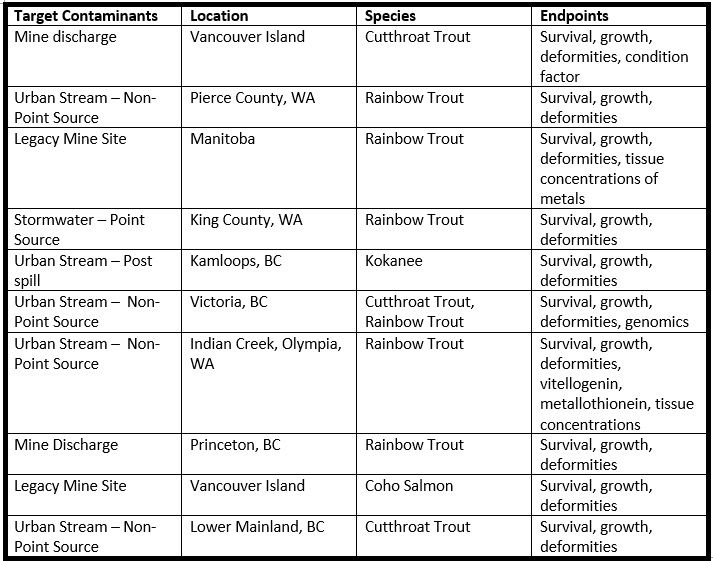In situ studies provide an opportunity to evaluate potential effects on biological receptors of concern under real-world conditions of interest. They also allow for deployment at fixed locations which makes it easier to interpret results in the context of specific source contaminants, and also apply rigorous statistical evaluation of the data. In addition, extended exposure durations can be used to assess cumulative impacts of multiple discharge events, as well as recovery of an impacted area following a spill. Biological receptors are typically chosen to replicate species and endpoints of interest in the receiving environment, with the additional consideration of having sufficient tissue available at the end of the exposure to measure uptake of contaminants of concern. In some cases, biochemical parameters (e.g., vitellogenin, cytochrome p450) can also be measured as indicators of exposure to potential endocrine disrupting compounds. Selected deployments are summarized below:

Have questions? Our team is here to help. This form is for business-related inquiries only. By filling out this information, you are adhering to our privacy policy.